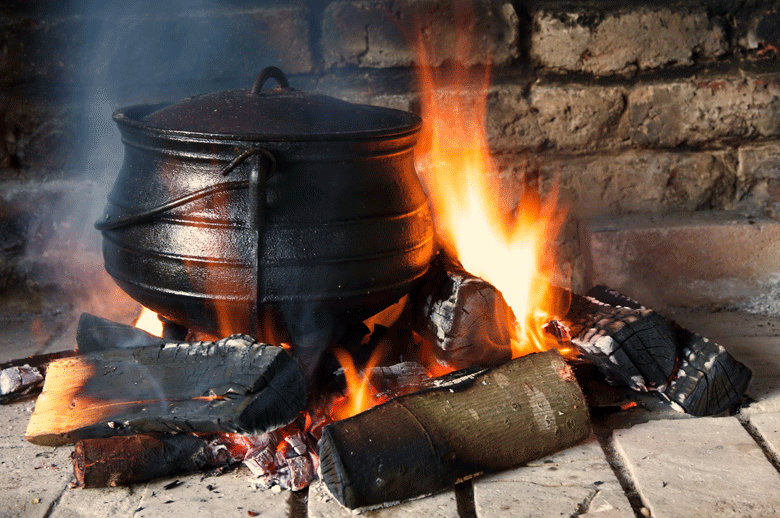
How did Chillies arrive?
South Africa has a diverse cuisine that has been shaped by its past. It is a cuisine that has elements from many parts of the world, including Europe, the Malay archipelago and Asia. These influences have been combined with local tastes and ingredients to form a style of cuisine that is unique to the country.
One common thread in a lot of South African cuisine is the use of Chillies. To understand how this happened, we will need to go back in time.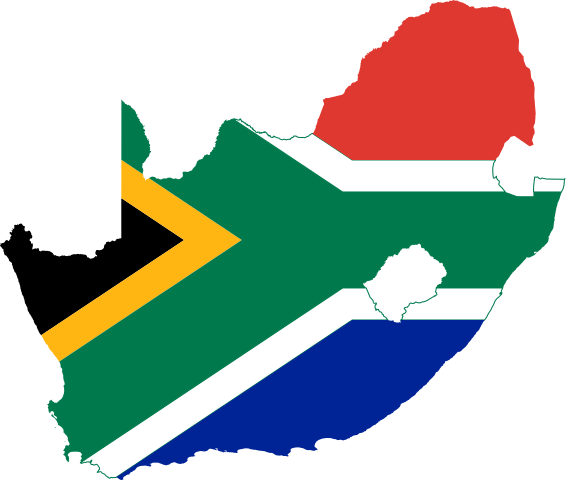
Many will know that South Africa has been colonised by both the Dutch and the English. While neither of these countries added much spiciness to South African cuisine, the people they brought with them, either as slaves or workers, certainly did. Their cuisine would undoubtedly have included Chillies as an ingredient. They came from counties where eating spicy food was traditional. Using Chillies in this cooking was part and parcel of how their food was prepared
Over time, the cuisine that they had brought with them started becoming more mainstream. It started becoming food that people outside of these communities started eating. With this acceptance came a love for Chillies that has carried on until today
But did they introduce Chillies to South Africa, or were they here before they arrived? To answer this question calls for a bit of speculation.
Some background

Christopher Columbus
With Chillies being as well known as they are today, it is heard to imagine a time when they were unknown out of South America, Mexico and the Caribbean. Chillies only became known in Europe after Christopher Columbus brought them back with him after his 1492 voyage to the West Indies. He believed Chillies could potentially become an alternative to black pepper, which was very expensive at the time.  His idea, however, never took off. The Spanish weren’t very interested in Chillies. So Chillies lingered in the background for a while.
His idea, however, never took off. The Spanish weren’t very interested in Chillies. So Chillies lingered in the background for a while.
Somewhere along the line, the Portuguese became aware of Chillies. Portugal was a great trading nation. They immediately recognised the potential of Chillies as a spice. It didn’t take long before the Portuguese were growing Chillies and exporting them around the world.
Portugal was also a great colonial nation. Their colonies in Africa, which included Angola and Mozambique, were established in the sixteenth century. Besides introducing Chillies to many countries (including, believe it or not, India) as part of the trade, they also took them to their colonies. Before long, Chillies were widely grown in the Portuguese overseas territories. Chillies were certainly grown in Mozambique at that time.
The Dutch

Cape Malays
When the Dutch colonised the Cape, they were accompanied by their slaves from India, Indonesia, and Malaysia. So naturally, these slaves brought their cuisine with them, and that meant? Of course, you’ve guessed it …. Chillies. Portuguese traders, who were very instrumental in making the Chilli known to the world, had been hard at work and had introduced Chillies to the countries the slaves had initially come from.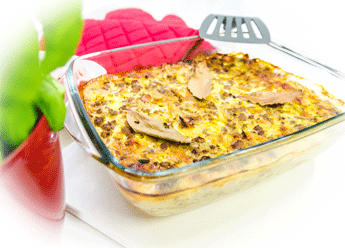
It is not inconceivable that Chillies found their way across the border to South African from neighbouring Mozambique well before the arrival of the Dutch in the seventeenth century. The Dutch established their first settlement in the Cape of Good Hope in 1632. It is however improbable that Chillies had found their way to the Cape before they arrived. The distance between Mozambique and the Cape would have been too much for the time. So instead, seeds for Chillies were probably carried into the Cape colony by the slaves that the Dutch brought with them.
It is likely that the Chillies they brought with them were Birds-eye Chillies. The Birds -eye was a Chilli that Portugal introduced to the Malaysians over a hundred years ago. It is probable that is the same species of Chilli that entered Soiuth Africa from Portugal's Mozambique colony.
The English

Indian cooking
In 1859 ,The owners of sugar cane plantations in the British colony of Natal began employing indentured labourers from India to work in the sugarcane fields. Under this arrangement, the labourers were brought to the country to work for five to seven years and then would be entitled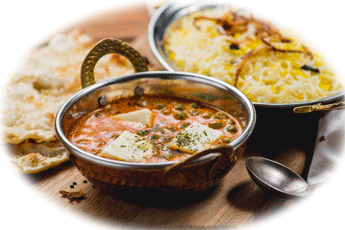 (in theory) to a paid return journey back to India.
(in theory) to a paid return journey back to India.
Naturally, these labourers arrived in the country with the cuisine they had grown up with. The Chilli was definitely part of their ingredient list. The Indians had also been introduced to the Chilli by the Portuguese through their colony in Goa. Indian cooks had previously only used black pepper and other aromatics to add pungency to their food. However, once they became aware of Chillies, that soon changed. Chillies became an essential ingredient In Indian cooking.
While Chillis were likely brought into the country by these labourers, they may have already been there. Because of the common borders between Natal and Mocambique ,it is quite possible that Chillies found their way into South Africa well before the Indians arrived.
The Portuguese
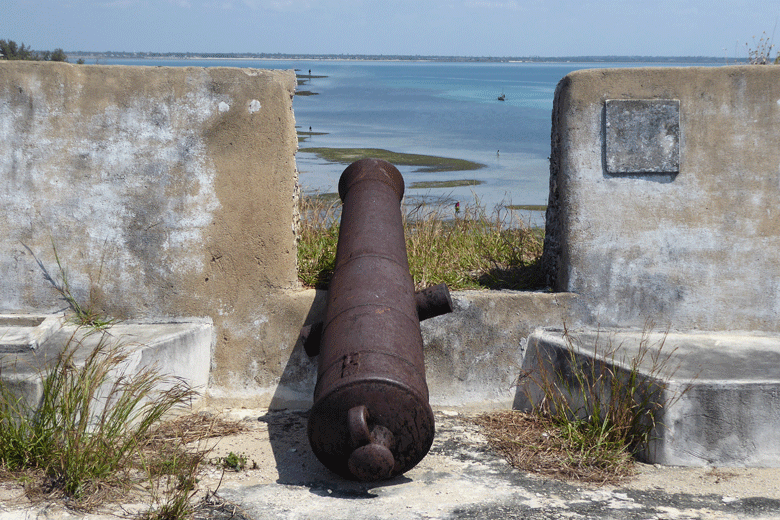
Mozambique
The Portuguese were highly instrumental in how Chillies got to South Africa. Besides the scenarios sketched above, subsequent events involving Portuguese speaking people from Africa shaped the popularity of Chillies in South Africa even more.
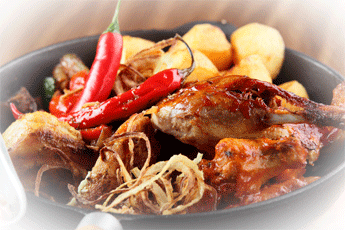
Many Portuguese people who had previously lived in former Portuguese colonies emigrated to South Africa. Their cuisine came with them. Spicy dishes with Chillies like Piri Piri Chicken and prawns made with African Devil Chillies were soon adopted as South African favourites. These dishes are now considered part and parcel of South Africa cuisine and are regularly eaten in restaurants and at South African barbecues (Braais).
One common thread that runs throughout. . That thread is the role the Portuguese played in introducing Chillies to the various players that laid the foundation to an important part of what South African cuisine is today.
Finally
it is quite possible Mozambican tribespeople brought Chillies to South Africa due to the free movement of the indigenous people on the Natal/Mozambique border. Alternatively, it could have been South African natives who brought Chillies back with them when they visited Portuguese occupied Mozambique . The Chilli they brought back would almost certainly have been the African devil
I would like to imagine Chillies have been used in South African cooking well before the arrival of the Dutch or English. After all, Chillies are now widely used in making a spicy tomato and onion relish (Sheba) that is served with Phutu. (a crumbly firm corn porridge similar to grits or polenta)
Phutu has been staple that has been eaten by the Zulu people in Natal for hundreds of years. With Natals’ proximity to Mozambique, Chillies may have been used in the Sheba that is served with it for the same length of time.
Image credits
Flag_of_South_Africa.svg: South Africa GovermentSouth_Africa_blank_map.svg: *South_Africa_blank.svg: Mangwananiderivative work: Clapsus (talk)derivative work: Shooke (Talk me in spanish, english or italian) 22:04, 10 March 2010 (UTC) / CC BY-SA 3.0 /via Wikimedia Commons
Rice and Danielle /CC BY-NC -SA 2.0 / via Flickr
Cornelius Kibelka / CC BY SA2.0 / via Flickr
